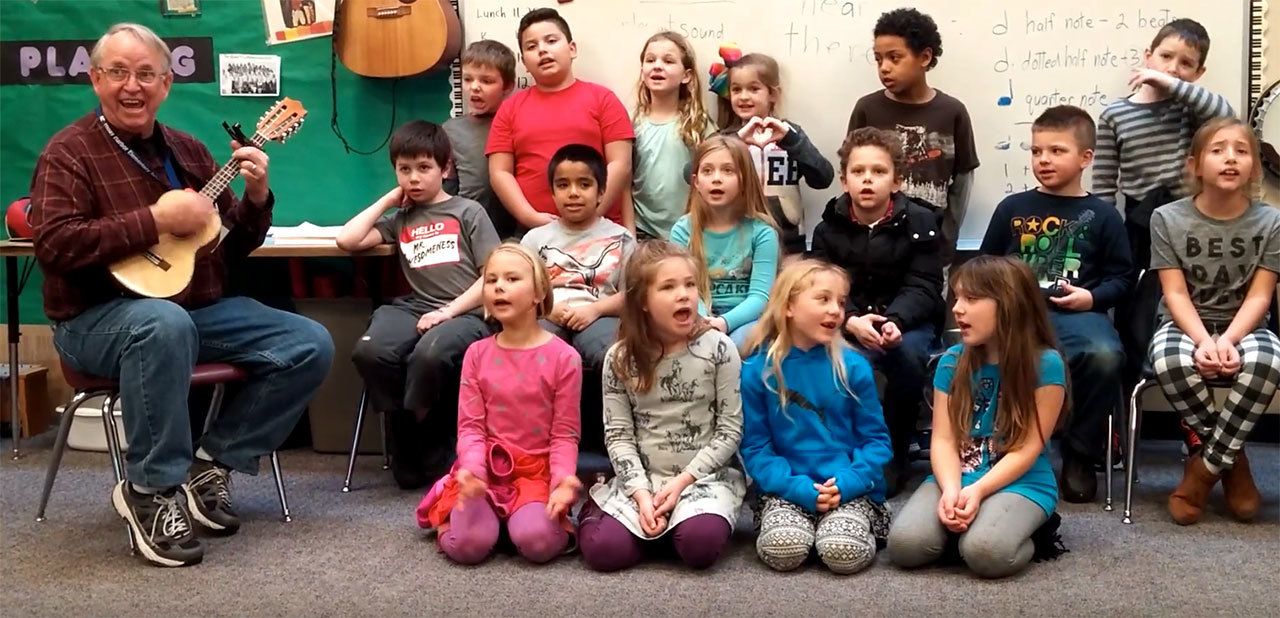By Hayley Day
Reporter
One of Sue Kareken’s second-grade science classes knew they could be YouTube stars the moment they watched a student music video. So they learned and performed their own song about rock formation to upload to YouTube.
“As they learned about the rock cycle, the music really helped to embed the knowledge more,” said Kareken, who teaches K-5 science at Friday Harbor Elementary School. “They were excited and engaged.”
That’s one way the integration of different courses can help students learn, said Kareken. Subject integration is the basis of STEM education, where science, technology, engineering and math are taught together, the way they would be used in real-world situations.
“STEM forces students to be collaborative with each other, to be creative, to think critically,” said Kareken. “It’s really where the next generation is going, combining science with the arts.”
That next teaching method is called STEAM – adding the A for arts, which, according to Derek Smith, San Juan Island School District STEM director, is hard to separate from subjects like engineering in the first place.
For Friday Harbor Elementary School students, science was added as an elective in the 2016-17 school year, said Kareken. Students leave their homerooms for 55 minutes twice a week for a separate science class – they way they go to gym twice a week and music once.
“It’s more science than they were getting before,” said Kareken.
The elementary school has its own science lab this year. It’s not quite as equipped as the STEM building — located next to the high school since 2015 and includes four 3D printers, a laser cutter and a multimedia room with a green screen.
Smith said Friday Harbor High School is the only school that has regular classes in the STEM building, but any district school’s students can use the building and equipment. Elementary school students often come to an after-school club, open to all grades, to build underwater robots.
“We’re trying to get an integrated K-12 STEM program going,” said Smith.
An elementary school STEM building could be possible in the next three years, according to Kareken, who is already teaching fifth graders to operate robots by mimicking basic web code.
“By the time these students get to high school, they’ll have background knowledge of coding, so expectations will be even higher,” said Kareken. “Who knows what jobs will be out there for them then.”
According to the U.S. Department of Commerce, STEM occupations are expected to grow 17 percent from 2008 to 2018, compared to 9.8 percent for non-STEM jobs. The U.S. Bureau of Labor Statistics reports the STEM workforce encompasses up to 20 percent of U.S. workers. Growth in the Internet of Things – the internetworking of devices that exchange data, like fitness trackers and smart cars – adds to this need.
“We want students to have real-world skills to use at the future jobs, whether they are college-bound or interested in classic trades,” said Smith.
Smith would like to see the district teach longer classes, covering one subject with different disciplines. Imagine a class where kids have a snowball fight, said Smith, then learn about the geometry behind the trajectory of their throws, as well as art created with snow.
“All classes should be collaborating with each other,” said Smith. “There could be hands-on, project-based work instead of the teacher telling students what to learn.”
Studies have shown that music’s repetition, rhyme and pattern help to recall lyrics — even those about converting sandstone to quartzite.
“It really seems to work this way, when you sing a song about something, you remember the facts much easier,” said FHES music teacher Steve Moore, who wrote the lyrics to the almost two-minute song in about an hour and a half, after Kareken requested his help.
It’s the same technique he used for his daughters, when younger, to help them remember their phone number and even the periodic table of elements in high school.
“I borrowed the melody from ‘Rock Around Clock,’” said Moore. The chorus includes “we’re gonna rock, we’re gonna rock the old rock cycle tonight.”
For Kareken, it was the first time she combined music, technology and science, but it won’t be the last. In an era of reality TV and social media, why wouldn’t FFES second graders be the next stars?
“They loved making the video,” said Kareken. “They immediately asked when they could do it again.”




